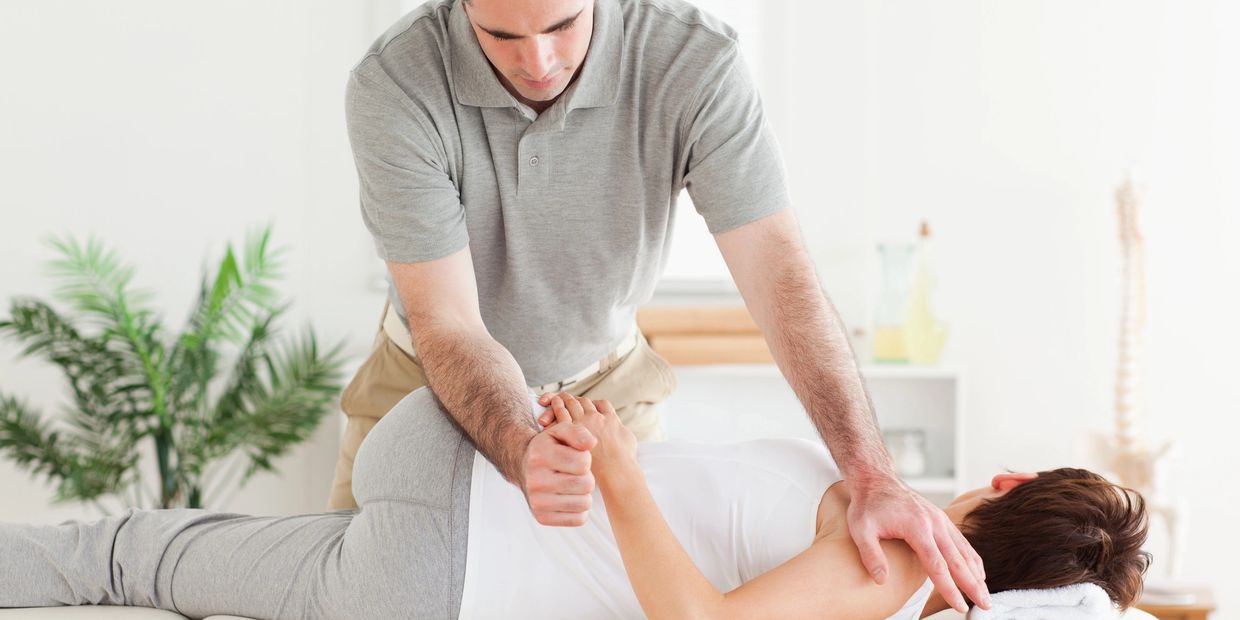
Therapeutic Exercises & Stretches
Therapeutic Exercises and Stretches for Injury Recovery
Therapeutic exercises and stretches are a cornerstone of rehabilitation, helping individuals recover from injuries, improve mobility, and enhance overall physical health. Whether recovering from an auto accident, sports injury, or chronic pain, a well-structured exercise program can restore function, prevent further injury, and support long-term wellness.
The Importance of Therapeutic Exercises
Therapeutic exercises are specifically designed to target the areas affected by injury or pain. Unlike general fitness routines, these exercises focus on improving strength, flexibility, balance, and coordination in a controlled manner. The primary goals of therapeutic exercises include:
- Restoring Mobility: Exercises that enhance joint range of motion, allowing for more fluid and pain-free movement.
- Strengthening Muscles: Targeted exercises that build muscle strength, particularly in the injured area, to support and stabilize joints.
- Improving Balance and Coordination: Exercises that help retrain the body to move correctly and efficiently, reducing the risk of re-injury.
- Pain Relief: Gentle exercises that can alleviate pain by reducing inflammation and improving circulation.
Common Therapeutic Exercises
The type and intensity of therapeutic exercises vary depending on the injury, the patient’s physical condition, and the stage of recovery. Here are some common therapeutic exercises used in rehabilitation:
1. Range of Motion Exercises:
- Passive Range of Motion (PROM): Involves moving the joint through its range of motion without the patient's muscle activation, often performed by a therapist.
- Active Range of Motion (AROM): The patient actively moves the joint through its range, helping to restore flexibility and function.
2. Strengthening Exercises:
- Isometric Exercises: Muscle contractions without joint movement, useful for maintaining muscle strength without stressing the injury.
- Resistance Band Exercises: Using resistance bands to perform various movements, targeting specific muscle groups to enhance strength and stability.
3. Flexibility Exercises:
- Static Stretching: Involves holding a stretch for a specific period, increasing muscle length and joint flexibility.
- Dynamic Stretching: Controlled, smooth movements that mimic the activities of daily life, improving flexibility and reducing stiffness.
4. Balance and Proprioception Exercises:
- Single-Leg Stands: Standing on one leg to improve balance and proprioception, often progressing to unstable surfaces like a balance board.
- Heel-to-Toe Walk: Walking in a straight line with the heel of one foot touching the toes of the other, enhancing coordination.
5. Cardiovascular Exercises:
- Low-Impact Aerobics: Activities like swimming, cycling, or walking that increase heart rate without putting excessive strain on the body.
- Treadmill Walking: Controlled walking exercises on a treadmill, often used to gradually reintroduce weight-bearing activities.
The Role of Stretching in Rehabilitation
Stretching is integral to any therapeutic exercise program, particularly in the recovery phase. Proper stretching helps:
- Increase Flexibility: Regular stretching keeps muscles long, lean, and flexible, making them less prone to injury.
- Enhance Blood Flow: Stretching improves circulation, promoting faster healing by delivering more oxygen and nutrients to injured tissues.
- Reduce Muscle Tension: Stretching can alleviate tightness and reduce muscle tension, helping to manage pain and discomfort.
Creating a Personalized Exercise Program
A personalized therapeutic exercise program should be developed by a healthcare professional, such as a physical therapist or chiropractor, who understands the patient's unique needs and limitations. This program will typically include a combination of the exercises and stretches mentioned above, adjusted in intensity and duration as the patient progresses.
The Benefits of Professional Guidance
While some exercises and stretches may seem simple, professional guidance ensures they are performed correctly to avoid further injury. A trained therapist can:
- Assess the Injury: Determine the appropriate exercises based on the type and severity of the injury.
- Monitor Progress: Adjust the exercise program as the patient recovers to ensure continued improvement without overloading the body.
- Provide Motivation: Encourage patients to stay committed to their exercise regimen, which is crucial for successful rehabilitation.
Conclusion
Therapeutic exercises and stretches are vital components of a comprehensive rehabilitation program. By targeting specific areas affected by injury, these exercises help restore function, alleviate pain, and prevent future injuries. Whether recovering from an auto accident, surgery, or chronic condition, a well-designed therapeutic exercise program can significantly enhance the healing process and support long-term health.
Schedule an Appointment Today
If you’re recovering from an injury and want to learn more about how therapeutic exercises and stretches can benefit you, contact our clinic today to schedule a consultation. Early intervention is key to a successful recovery. Call 386-951-9200 today to schedule an appointment at one of our convenient locations in The Villages or DeLand, FL. Our compassionate team is here to help you get back to living pain-free.
Book Your Appointment Today
Ready to start feeling better? Contact us today to schedule your appointment with one of our chiropractors. We offer convenient appointment times and offices in DeLand or The Villages, FL.
We Love Our Patients!
Contact Us
Locations
1575 S. SR 15a, Suite 300
DeLand, FL 32720
8640 E. County Rd. 466, Unit A
The Villages, FL 32162
DeLand, FL Location
Mon | 08:30 am – 07:00 pm | |
Tue | 01:00 pm – 06:00 pm | |
Wed | 08:30 am – 07:00 pm | |
Thu | 08:30 am – 07:00 pm | |
Fri | 08:30 am – 01:00 pm | |
Sat | 08:30 am – 01:00 pm | |
Sun | Closed |
The Villages, FL Location: By Appointment Only
Copyright © 2020-2024 Chiro Nomad, LLC - All Rights Reserved.
